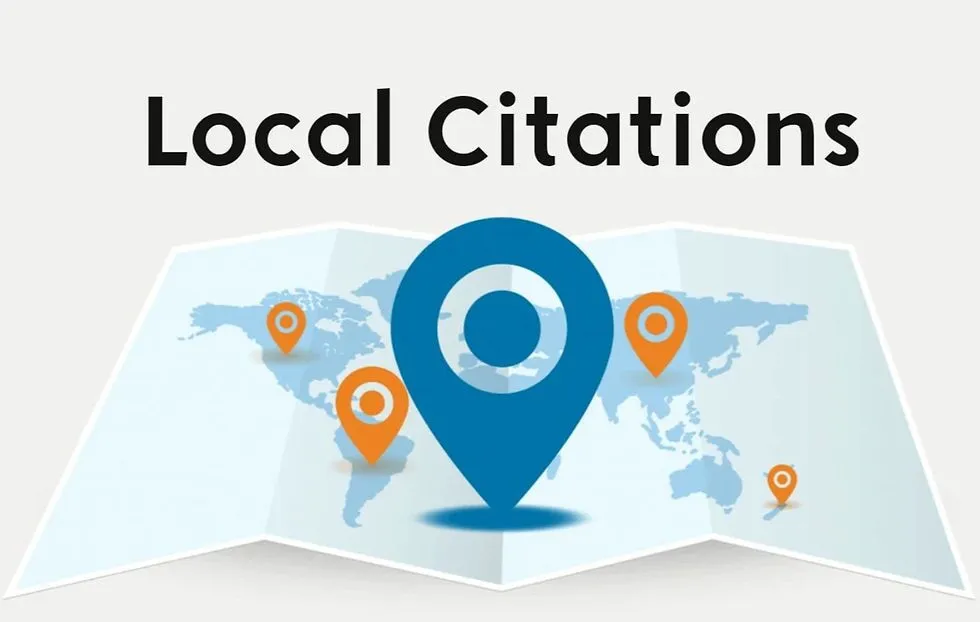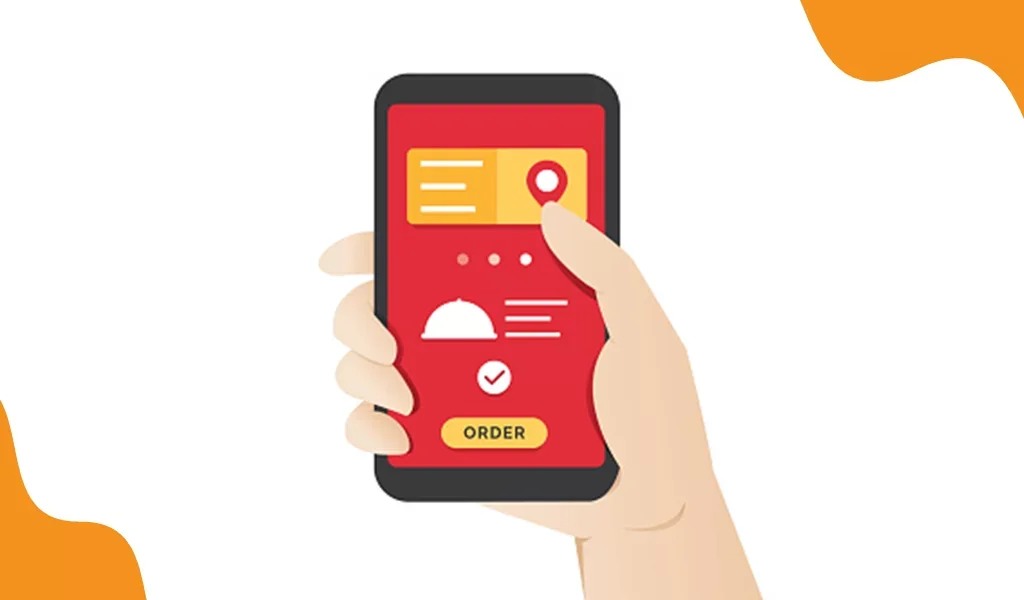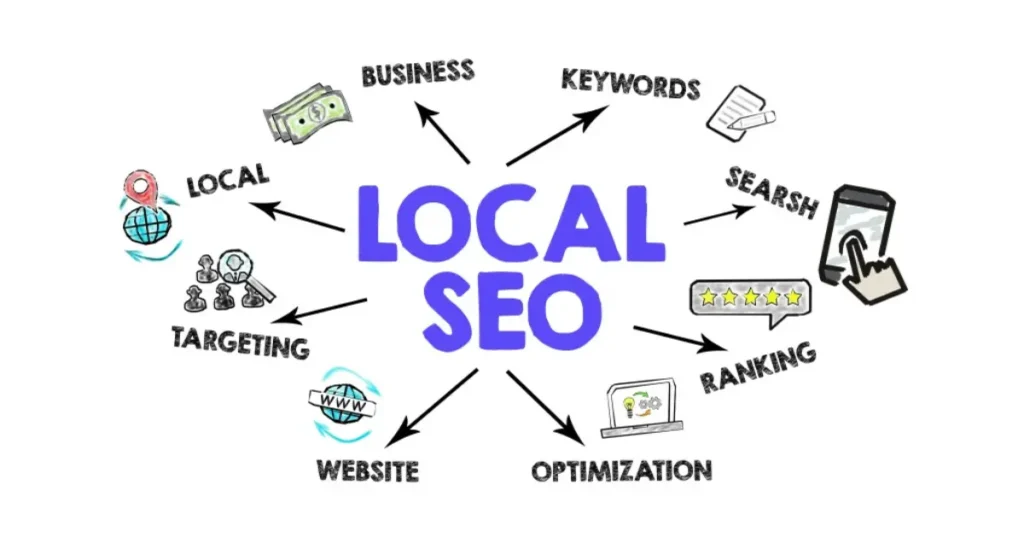SEO For Restaurants is now as vital as your best menu item. Forget just waiting for walk-ins; hungry people in the US cities search online now for their next meal.
This article explores restaurant SEO and offers the top 10 ways to make your place shine online in 2025.
Discover practical steps, supported by current data, to help you attract more local diners and fill your seats. Let’s begin!
Key Takeaways:
- Perfect your Google Business Profile for top local visibility.
- Research local keywords thoroughly to understand customer searches.
- Ensure your restaurant website works well for SEO and on phones.
- Create consistent and correct local listings on key sites.
- Get good local links to build your online authority.
- Optimize your online menu for search engines and ease of use.
- Use social media smartly for local connection and SEO.
- Watch and manage your online reputation through reviews.
- Track your SEO results and change your plans as needed.
- Aim for a smooth and helpful online experience for future diners.
Why Restaurant SEO Matters in 2025
Consider your own searches. When you want tacos, do you look in a phone book? Probably not. You likely type “tacos near me” into Google.
Your future customers do the same. Recent data indicates that over 80% of local mobile searches lead to an offline action, like a visit or a call, often within hours. For restaurants, this number is huge.
The article from Search Engine Journal shares SEO experts’ predictions for 2025. Key points include focusing on site fundamentals (speed, accessibility, UX), integrating SEO with broader marketing strategies, and diversifying across platforms like social media and AI search engines.
Experts also highlight the importance of content organization based on user intent and maintaining authority.
“In 2025, a strong online presence isn’t just helpful; it’s needed to succeed in the competitive restaurant business.”
Restaurant SEO means making your online presence better, so your restaurant shows up first when local people search for food.
The Statista page on U.S. restaurants highlights key industry data, including a $1.09 trillion market size in 2023, 13.2 million employees, and a strong consumer preference for takeout and delivery.
Additionally, 91% of restaurants use kitchen automation, and 75% offer contactless ordering and payments.
It’s about making it easy for hungry searchers to find you. Without good SEO for restaurants, many potential diners won’t even know you exist. Let’s look at the top 10 ways to fix that.
Google Search Central (formerly Webmaster Central) guidelines on local SEO, Google Business Profile best practices, website quality guidelines, mobile-friendliness, and structured data (schema.org, specifically the Restaurant schema).
Strategy 1: Claim Your Digital Spot: Optimize Your Google Business Profile (GBP)

Your Google Business Profile often gives the first online impression of your restaurant. Think of it as your digital sign on Google Maps and local search results. Visit the Google Business Profile help center for further reference.
Optimizing it correctly forms the base of effective local SEO for restaurants.
- Claim and Verify: First, claim your GBP listing and make sure it’s verified. This gives you control over what people see.
- Fill in Everything: Don’t skip any sections. Provide correct hours, address, phone number, website link, and a good description of your restaurant. Point out what makes you special.
- Show Great Photos and Videos: Good visuals matter. Display your tasty food, nice atmosphere, and happy staff. Google says businesses with photos get 42% more requests for directions and 35% more website clicks.
- Choose Clear Categories: Pick the categories that best describe your food and style (for example, “Mexican Restaurant,” “Family Style Restaurant”).
- Use Google Posts: Regularly share updates, deals, new menu items, and events using Google Posts. Keep your profile current and interesting.
- Encourage and Handle Reviews: Ask happy customers for reviews. Good reviews build trust and improve your local ranking. Respond to all reviews, good and bad, politely and quickly. Research shows businesses that reply to reviews seem 1.7 times more trustworthy than those that don’t.
- Answer Questions Fast: Watch the Q&A section and answer customer questions quickly and accurately. This shows you care.
- Learn from Insights: Check your GBP Insights regularly to see how people find you, what they do (visit your website, call, get directions), and where they are located. This data helps you plan.
Example: “Rosa’s Tacos” in Phoenix made sure their GBP had great taco photos, correct hours, and replies to every review. They saw much better visibility for searches like “tacos delivery Phoenix” and “best tacos near me.”
Strategy 2: Speak Your Customers’ Language: Conduct Thorough Local Keyword Research

Understanding the words people in your area type into Google is key to good restaurant SEO. This is called keyword research.
- Think Locally: Focus on keywords with locations. Instead of just “burgers,” think “best burgers downtown Denver” or “burger joint near me with outdoor seating.”
- Consider Food and Services: Research keywords related to your type of food (for example, “authentic Italian pasta”), menu items (for example, “vegetarian chili”), and services (for example, “restaurant with private dining”).
- Long-Tail Keywords: These are longer, more specific phrases (for example, “dog-friendly restaurants with brunch on Sunday”). They might have fewer searches, but the people who use them often know exactly what they want.
- Use Keyword Research Tools: Google Keyword Planner (free with a Google Ads account) can give you useful information about search volume and related keywords. Also, look at Google’s Autocomplete suggestions and the “People Also Ask” (PAA) section for related questions.
- Check Competitors: See what keywords your top local competitors rank for (you usually need special tools for a deep look).
- Use Keywords Wisely: Once you have your list of good keywords, use them naturally in your GBP description, website text (page titles, headings, main text), image descriptions, and even menu descriptions when it fits.
Example: “Pho Saigon” in Seattle might learn that “best pho near University District” gets many local searches. They can then adjust their website and GBP to target this specific phrase.
Strategy 3: Your Digital Base: Optimize Your Restaurant Website for SEO

Your website is your main online spot. It needs to be easy to use and good for search engines to bring in and keep visitors.
- Easy Structure and Navigation: Make sure your website is easy for people and search engines to navigate. A clear menu, logical pages, and links between your own pages are important.
- Mobile-First Thinking: In 2025, a website that works well on phones is a must. Most local restaurant searches happen on phones. Your site must adjust to different screen sizes and work smoothly. Google now focuses on the mobile version of your site first for ranking.
- Key On-Page Optimization:
- Good Title Tags and Meta Descriptions: These short bits of text show up in search results and should make people want to click. Include relevant keywords and tell people what to do (for example, “Order Online Now!”).
- Smart Header Tags (H1-H6): Use header tags to organize your text and highlight important keywords. Your main page title should be an H1 tag.
- Helpful, Keyword-Rich Text: Create useful and interesting text about your restaurant, your story, your food, and your local area. Blog posts about local events or food trends can also bring in relevant visitors.
- Optimize Images: Use descriptive file names (for example, “delicious-steak-dinner.jpg”) and alt text that includes relevant keywords.
- Link Your Own Pages: Link to other relevant pages on your website. This helps search engines understand your site and spreads value between pages.
- Use Restaurant Schema Markup: This special code helps search engines understand key details about your restaurant, like your hours, menu, prices, and type of food. This can make your listing in search results stand out.
- Website Speed Matters: A slow website annoys people and can hurt your search rankings. Make your images smaller, use browser caching, and think about using a content delivery network (CDN) to make your site faster. Data shows that a one-second delay in page loading can reduce how many people take action on your site by 7%.
Example: “The Spicy Grill” makes sure their website loads fast on phones, has easy links to their menu and reservations, and uses schema markup to show their hours and type of cuisine right in Google search results.
Strategy 4: Be Seen Everywhere. Important: Build High-Quality Local Citations

Local citations are online mentions of your restaurant’s Name, Address, and Phone number (NAP) on other websites.
They act like digital signs, helping search engines confirm your business information and improve your local ranking.
- Consistency is Key: Make sure your NAP information is exactly the same on all online sites. Even small differences can confuse search engines.
- Focus on Important Sites: Prioritize listings on major sites for restaurants, like Yelp, TripAdvisor, OpenTable, Resy, local business directories (for example, your local Chamber of Commerce website), and sites specific to the food industry.
- Submit Manually: While some services offer to build citations automatically, submitting them yourself to good websites often works better.
- Check Existing Citations: Use tools to find your current citations and make sure they are correct. Fix any that are wrong.
- Keep Them Updated: Regularly check your citations to ensure they are still accurate, especially if your business details change.
Example: “Giovanni’s Pizza” makes sure their name, address (456 Elm Street, Townsville, USA), and phone number (555-9876) are listed exactly the same way on Yelp, TripAdvisor, and their local business directory.
Strategy 5: Earn Local Trust: Focus on Local Link Building

Backlinks are links from other websites to your website. For restaurant SEO, local backlinks – links from other businesses and groups in your community – are very valuable.
They tell search engines that your restaurant is a trusted and relevant local business.
- Partner with Local Businesses: Work with nearby stores, hotels, or tourist spots and ask them to link to your website (for example, on a “Local Recommendations” page).
- Sponsor Local Events: Sponsoring local events or charities often includes website mentions and good backlinks.
- Connect with Local Food Bloggers: Offer them a free meal in exchange for an honest review on their blog, which usually includes a link to your site.
- Get Listed in Local Guides: Look for chances to be included in online guides about your city or neighborhood.
- Participate in Local Online Groups: Join relevant local forums or social media groups (if allowed) and mention your restaurant with a link if it’s helpful and fits the conversation.
Example: “The Daily Grind,” a coffee shop, gets a backlink from the local library website where they host a weekly book club. This provides a good link and shows their community involvement.
Strategy 6: Show Off Your Food: Optimize Your Online Menu

Your online menu isn’t just a list of food; it’s good content for SEO. Making it better can attract customers searching for specific dishes.
- Make it Easy to Find: Your menu should be easy to locate and read on your website. Avoid only using a PDF, as search engines can’t easily read the text in it.
- Use Text: Display your menu items in regular website text so search engines can understand what you offer.
- Include Relevant Keywords Naturally: Use dish names and descriptions that people might search for (for example, “creamy mushroom risotto,” “spicy chicken wings”).
- Good Food Photos: Add appealing photos of your dishes. Use descriptive file names and alt text with relevant keywords (for example, “authentic-pad-thai.jpg”).
- Add Details: Including information about dietary needs (for example, “gluten-free,” “vegan options”), ingredients, or even calories can attract specific customers and provide useful content.
Example: “Mama Mia’s Pizza” lists their “Pepperoni Lovers Pizza” with a full description of the toppings and a great photo, making it more likely to show up in searches for that specific pizza in their area.
Strategy 7: Connect Locally: Use Social Media for Local SEO

While social media activity might not directly improve search rankings, a strong social media presence can really help your overall restaurant SEO by making your brand more visible, connecting with local people, and driving traffic to your website.
- Regular and Interesting Posts: Share good photos and videos of your food, your restaurant’s vibe, behind-the-scenes looks, and special deals.
- Engage Locally: Talk to your local followers, reply to comments and messages, and run local contests or promotions aimed at your community.
- Use Location Tags and Local Hashtags: When you post, tag your location and use relevant local hashtags (for example, #MiamiEats, #[YourNeighborhood]Food).
- Share Website Links: Include links to your website (especially your menu and reservation pages) in your social media profiles and posts.
- Keep Your Info Consistent: Make sure your restaurant’s name, address, and phone number are the same across all your social media accounts.
Example: “The Blue Diner” in Portland regularly posts photos of their daily specials on Instagram, uses the hashtag #PDXFood, and has a link to their online ordering system in their bio.
Strategy 8: Your Reputation Matters: Monitor and Manage Your Online Reviews

Online reviews are like today’s recommendations from friends and can greatly influence where someone decides to eat. Actively managing your online reputation is a key part of restaurant SEO.
- Encourage Reviews: Politely ask happy customers to leave reviews on sites like Google, Yelp, and TripAdvisor. Consider using small cards at tables or follow-up emails.
- Watch Review Sites Often: Stay informed about what people are saying about your restaurant on different platforms.
- Respond to All Reviews: Whether the review is good or bad, reply professionally and quickly. Thank people for positive feedback and address negative comments constructively, offering solutions when possible. This shows you care about your customers.
- Learn from Feedback: Use the comments in reviews to find ways to improve your food, service, or atmosphere.
“88% of consumers trust online reviews as much as personal recommendations.”
– BrightLocal Study, 2024
Example: When “Casa de la Paella” gets a negative review mentioning slow service during a busy night, the owner replies publicly, apologizes, and explains the steps they are taking to improve staffing during peak hours. This shows they listen to customer feedback.
Strategy 9: Measure and Adjust: Track Your SEO Performance and Adapt

Restaurant SEO isn’t something you do once and forget. You need to watch how you’re doing and make changes based on the data.
- Website Traffic: See how many people visit your site overall and how many come from search engines using Google Analytics.
- Keyword Rankings: Check where your important keywords rank in search results using tools like Google Search Console.
- Google Business Profile Performance: Look at how many people view your profile, click to your website, call you, and ask for directions in your GBP Insights.
- Website Actions: Track online orders, reservation form submissions, and other important actions on your site.
- Local Listing Accuracy: Regularly check if your name, address, and phone number are consistent everywhere online.
- Use Tracking Tools: Google Analytics and Google Search Console are free and helpful tools for watching your website’s performance and finding areas to improve.
- Stay Informed: The world of SEO always changes. Keep up with algorithm updates and best practices by reading trusted SEO blogs and industry news.
- Change Your Plan: Based on your performance data, adjust your SEO efforts. If certain keywords aren’t bringing in traffic, rethink your keyword plan. If your GBP isn’t getting many leads, improve your photos and posts.
Example: “Burger Bliss” notices through Google Analytics that many people visit their website on phones, but few complete the online order form. They then look at their mobile website design and make the ordering process simpler.
Strategy 10: Focus on the User: Provide a Smooth Online Experience

Ultimately, the goal of restaurant SEO is to get more customers to your restaurant. To do this, you need to make their online experience easy and helpful.
- Easy Online Ordering and Reservations: If you offer online ordering or reservations, make sure the process is simple and works well on all devices.
- Clear and Current Information: Ensure your website and GBP have accurate and up-to-date details about your hours, menu, location, and how to contact you.
- Good Visuals: Use attractive photos and videos to show off your food and restaurant atmosphere.
- Fast Loading Times: Make sure your website loads quickly so people don’t get frustrated.
- Good Online Customer Service: Reply quickly and professionally to online questions and reviews.
By focusing on a positive online experience, you not only improve your SEO but also build trust and encourage potential diners to choose your restaurant.
Conclusion
Mastering restaurant SEO in 2025 requires a consistent effort across these ten key strategies. Optimizing your Google Business Profile, understanding local keywords, improving your website, and building local citations.
Showcasing your menu, engaging on social media, managing your reputation, tracking your progress, and prioritizing a great user experience.
You can significantly improve your online visibility and attract more hungry customers to your tables. The digital appetite is real – make sure your restaurant is ready to satisfy it!





